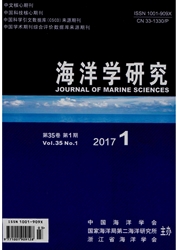

 中文摘要:
中文摘要:
综述了国内外余氯对鱼类急性、亚急性毒性效应及其毒性机理等方面的研究进展,结合我国沿海电厂余氯排放与邻近海域鱼类养殖生产现状,探讨了余氯对鱼类毒理学研究存在的问题,指出了需结合冷却水的温升作用,进一步考察冷却系统氯处理对鱼类早期生命阶段(受精卵、胚胎和仔稚鱼)的毒性效应,同时还应加强余氯对鱼类长期毒性影响的研究,为我国制订企业冷却水加氯和余氯浓度的排放标准提供参考。
 英文摘要:
英文摘要:
Chlorine is widely used in the treatment of industrial cooling water and domestic sewage for disinfecting or anti-fouling based on its low cost,broad-spectrum activity,easy availability and simple applicability.Nevertheless,due to the relatively slow decay rate of this oxidant and the formation of chloramines,it may cause negative impact to aquatic life when being discharged into receiving waters.With the drastic increase number of large-sized thermal(nuclear) power plants adjacent to the estuaries and bays,the damage of fish caused by thermal addition and chlorination in cooling and receiving waters has become a serious ecological problem in coastal areas in China.Because the estuary and bay are not only the spawning,nursery and feeding ground,but also the main mariculture region and migration passage for fish.Up to date,however,very little work has been carried out on the response of marine fish to the combined effects of chlorination and temperature elevation in China.Moreover,there is no criterion for regulating the chlorine dosage and residual chlorine discharge level in coastal industrial cooling systems in China.Therefore,it is necessary to study the toxicity of residual chlorine on fish.In this paper,we reviewed the documents on the acute and sub-acute toxic effects of residual chlorine on fish,as well as its toxic mechanism.The tolerance of fish to residual chlorine is quite feeble,and the median lethal concentration(LC50) is very low.Thus,acute death of fish can be observed at a common chlorine dosage(1~2 mg/L) in the power plant cooling system.And the usual discharging chlorine level at 0.1~0.2 mg/L has already approached or even exceeded their tolerant limits(30 min-LC50).Fish is highly sensitive to the sub-lethal residual chlorine which can result in the avoidance response of mostly fish at low concentration(0.01~0.40 mg/L).Consequently,the discharge dosage of residual chlorine from the cooling system is ascending with the rapid increase of coastal power plants,which brings about
 同期刊论文项目
同期刊论文项目
 同项目期刊论文
同项目期刊论文
 期刊信息
期刊信息
